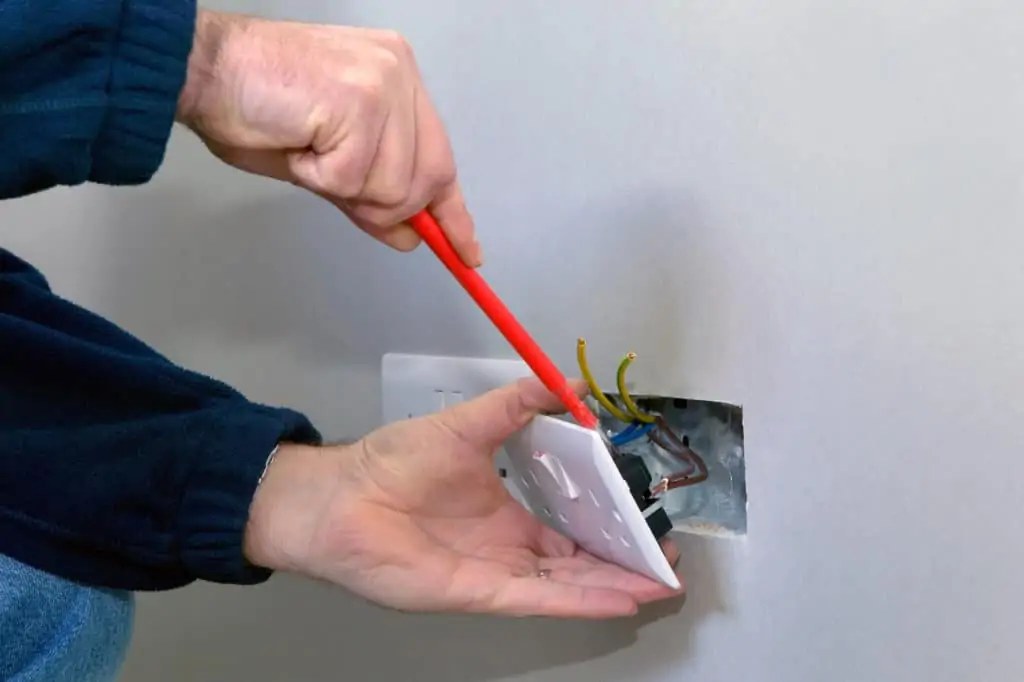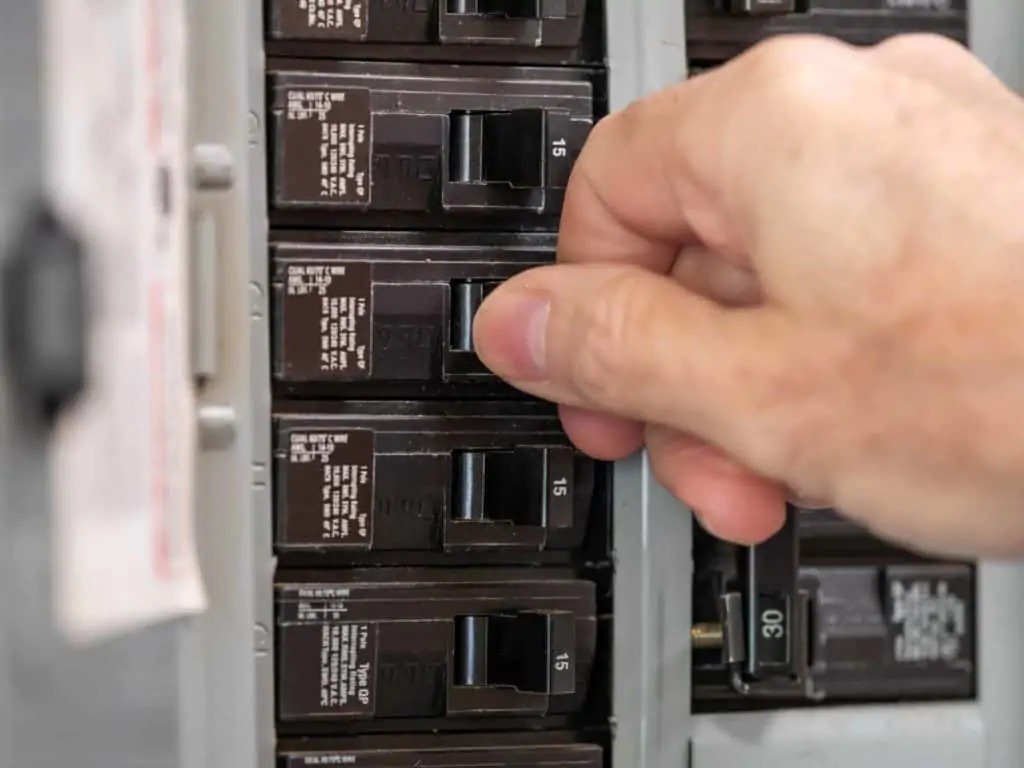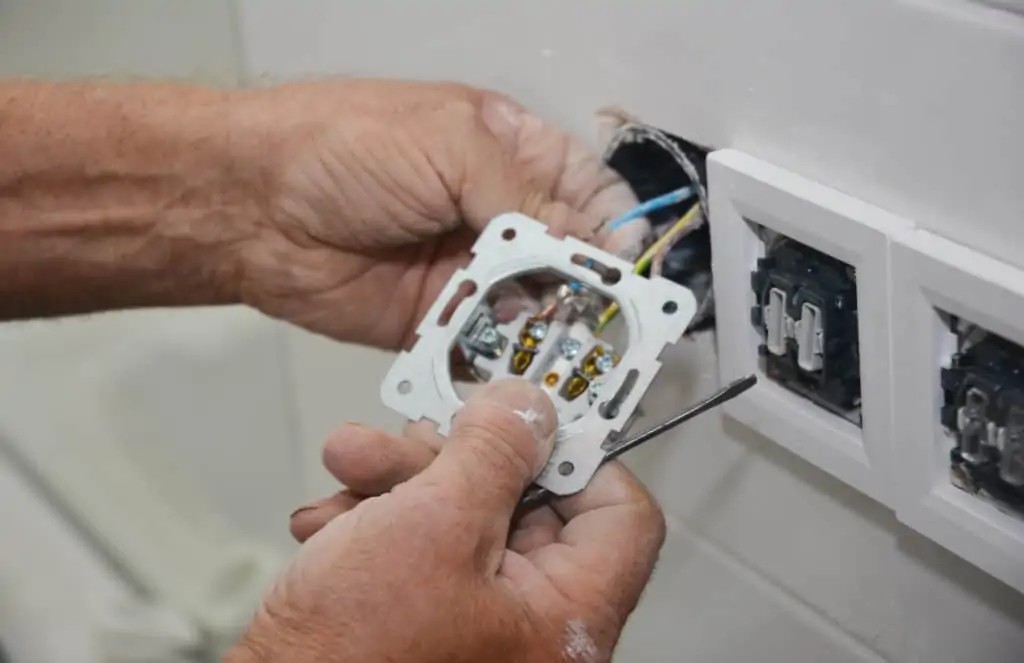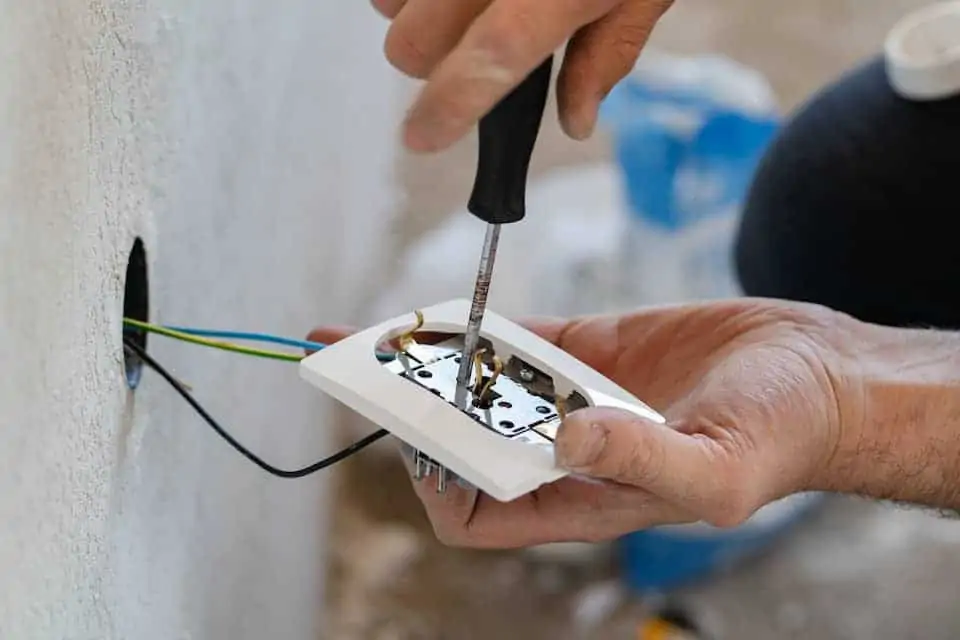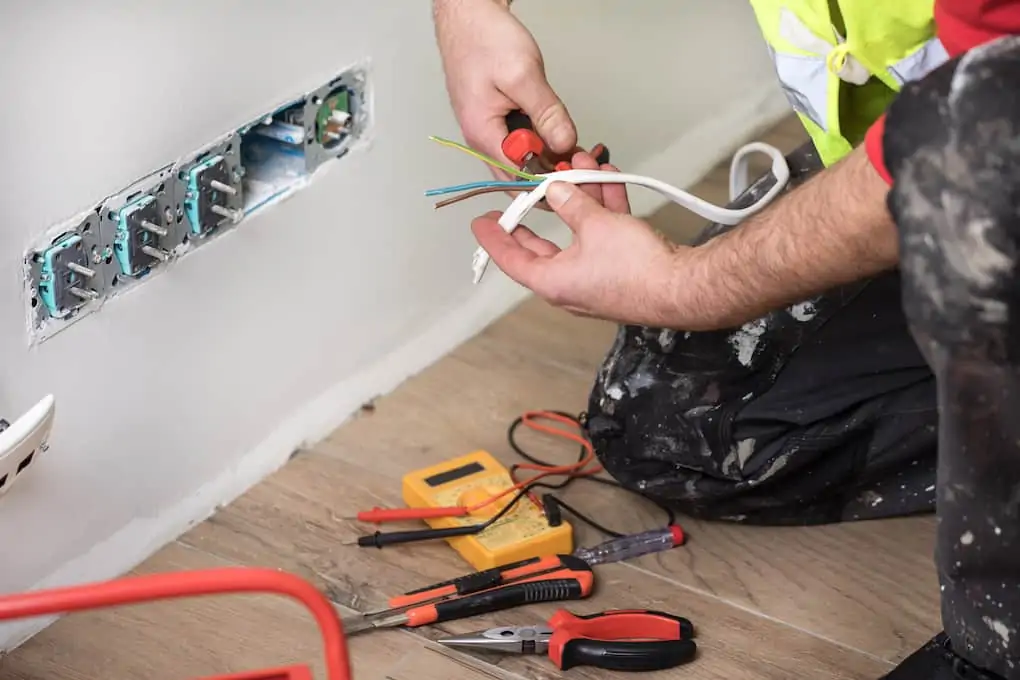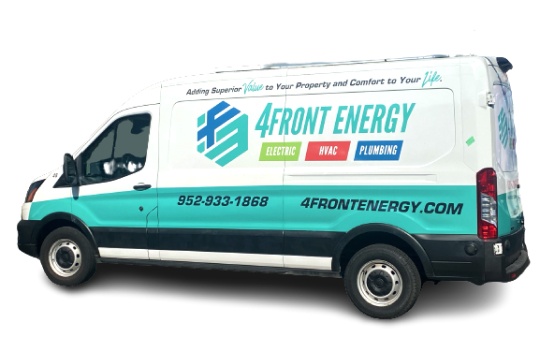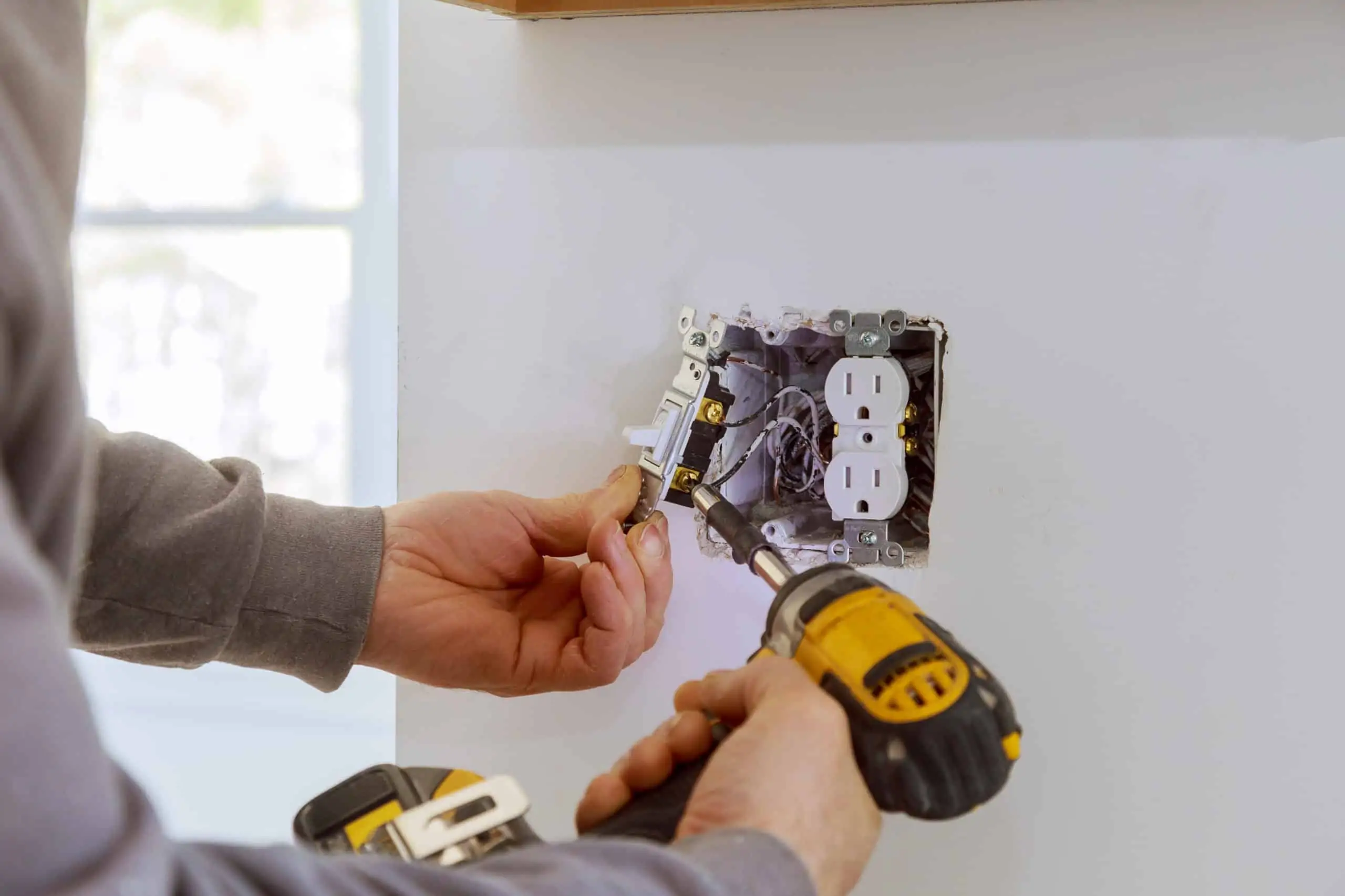
Adding a new outlet into a room can be a quick process, but only if you know what you’re doing.
DIY outlets aren’t for everyone because you’re working with a large amount of voltage. To stay safe, here’s our guide on how to install and wire your own electrical outlets the right way.
Installing Your DIY Outlet In 5 Easy Steps
Here are 5 easy ways to install your outlet safely.
1. Shut Off the Wall Outlet
First, you want to go to the electrical box and turn off the power for the circuit you’re working on. Then, use a stud finder to find the studs in your wall. This is so you can install the new outlet between the studs. Unscrew the old outlet from the wall and use a voltage tester to see if the circuit is still live, going from the ground wire, to the neutral wire, and then the hot wire.
From here, use a pencil to draw an outline of where the new outlet will go. Cut out that area with a drywall saw. You should also unscrew the old outlet from the wall and punch out one of the knock-outs.
2. Feed New Cable
With the knock-out punched out, put a 14 gauge wire into the hole at the back of the existing box. You’ll want to feed enough wire to reach the box for the new outlet, plus an extra foot or two to give some slack and working room.
3. Rewire Existing Outlet
Now that the new wire is in, you’ll want to connect it to the old wires in the old outlet’s electrical box. Using wire strippers, strip off the plastic coating on the first 10 inches of the new wire. This will expose the black, white, and copper wires inside of the cable.
From here, you’ll want to run two inches of the new cable with some sheathing into the original electrical box. Strip 1/2 to 5/8 inches of some of the insulation from the wires and connect the new wires to the existing bundles with wire connectors. Make sure that you match the wire swatches: white to white, black to black, and copper to copper.
4. Move Cables to New Location
Using a hook or feed tool, grab the new wire and bring the new cable through the wall to the new outlet’s electrical box. Pull the new cable through the opening you cut into the wall earlier and strip about nine inches of insulation from the new cable. Attach the cable to the electrical box so that about one inch of the cable is inside the new electrical box and mount the box to the wall.
5. Set Up New Outlet Location
Strip the ends of the black, white, and copper wires inside the new electrical box so that they can attach to the new outlet. The white wire will attach to the silver-colored screw, the black will go to the gold-colored screw, and the copper wire goes to the green-colored screw.
Once you’ve got everything attached and made sure the cable sheath is still inside the electrical box, attach the outlet to the electrical box. From here, an electrical inspector can check your work and make sure everything is safe and secure.
When to Install Another Electrical Outlet
Before you break out the toolbox, you should be certain that adding another receptacle is the best way to go for your home. There are a few reasons why you might need to add another outlet, such as:
-
You Blow Breakers/Fuses Often – Adding another outlet that draws from a different circuit can keep you from blowing your breaker. Just make sure you don’t make matters worse by adding onto the same circuit that’s causing problems!
-
Codes Restrict Your Circuit Options – Check out our post to view the 8 most common electrical code violations in your home. Typically, you can’t have more than eight lights or electrical appliances on a single 15-amp circuit. Check your breakers or test the lights/outlets on a circuit to see how many are on the circuit you want to modify.
-
You Want To Install GFI Outlets – GFI outlets help keep you and your family safe by tripping when they detect moisture or a short. Installing these outlets can prevent electrical damage or fires.
If you’re unsure if you need another outlet, contacting a local electrician will help give you more insight on what to do.
Still Have Questions? Contact Electric-City Corporation Today!
Since there is a lot of safety concerns when you’re working on DIY outlets, it’s usually best to have a professional electrician offer their insight or talent for these kinds of projects. We have services for both residential and commercial needs, you reach out to us if you ever need guidance or work done for your home or business!

